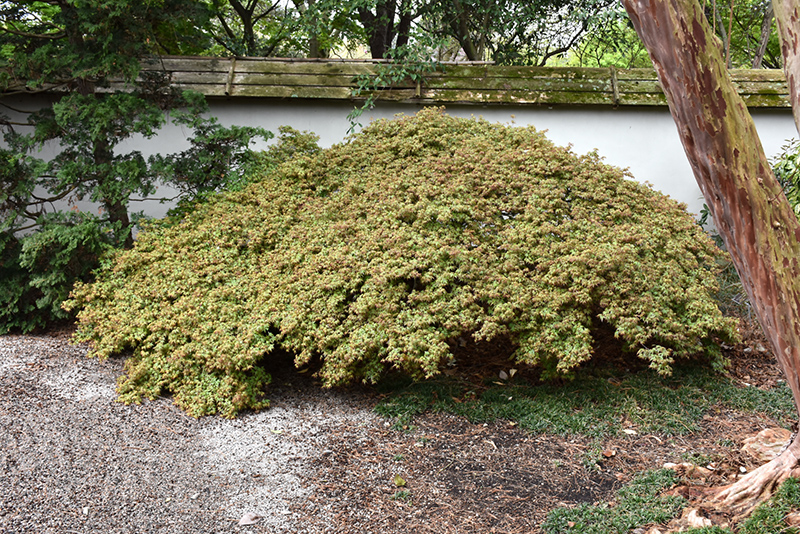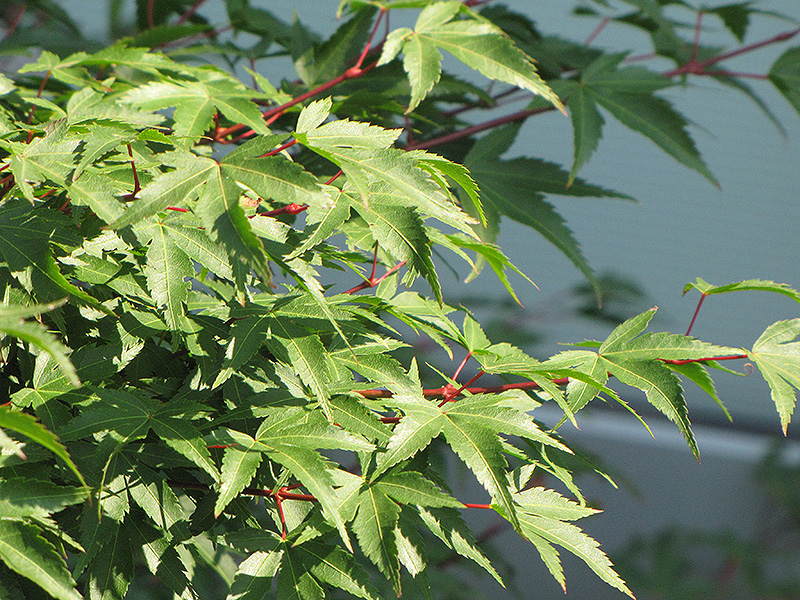>> Home
Kiyohime Japanese Maple
Acer palmatum 'Kiyohime'
Height: 4 feet
Spread: 6 feet
Sunlight:
![]()
Hardiness Zone: 5
Other Names: Kiyo Hime
Description:
A true dwarf form of Japanese Maple; also used in bonsai because it does not tend to sport long shoots; shiny light green leaves are tinged with red-orange in the spring; a beautiful low growing elegant tree for landscape use or along borders
Ornamental Features
Kiyohime Japanese Maple is primarily valued in the landscape or garden for its characteristic tiered habit of growth. It has attractive green deciduous foliage which emerges crimson in spring. The small deeply cut lobed palmate leaves are highly ornamental and turn outstanding shades of yellow, orange and coppery-bronze in the fall.
Landscape Attributes
Kiyohime Japanese Maple is an open deciduous tree with a strong central leader and a stunning habit of growth which features almost oriental horizontally-tiered branches. Its relatively fine texture sets it apart from other landscape plants with less refined foliage.
This is a relatively low maintenance tree, and should only be pruned in summer after the leaves have fully developed, as it may 'bleed' sap if pruned in late winter or early spring. It has no significant negative characteristics.
Kiyohime Japanese Maple is recommended for the following landscape applications;
- Mass Planting
- Rock/Alpine Gardens
- General Garden Use
- Container Planting
Planting & Growing
Kiyohime Japanese Maple will grow to be about 4 feet tall at maturity, with a spread of 6 feet. It tends to be a little leggy, with a typical clearance of 1 foot from the ground. It grows at a slow rate, and under ideal conditions can be expected to live for 60 years or more.
This tree does best in a location that gets morning sunlight but is shaded from the hot afternoon sun, although it will also grow in partial shade. Keep it away from hot, dry locations that receive direct afternoon sun or which get reflected sunlight, such as against the south side of a white wall. It prefers to grow in average to moist conditions, and shouldn't be allowed to dry out. It may require supplemental watering during periods of drought or extended heat. It is not particular as to soil pH, but grows best in rich soils. It is somewhat tolerant of urban pollution, and will benefit from being planted in a relatively sheltered location. Consider applying a thick mulch around the root zone in winter to protect it in exposed locations or colder microclimates. This is a selected variety of a species not originally from North America.
Kiyohime Japanese Maple is a fine choice for the yard, but it is also a good selection for planting in outdoor pots and containers. Because of its height, it is often used as a 'thriller' in the 'spiller-thriller-filler' container combination; plant it near the center of the pot, surrounded by smaller plants and those that spill over the edges. It is even sizeable enough that it can be grown alone in a suitable container. Note that when grown in a container, it may not perform exactly as indicated on the tag - this is to be expected. Also note that when growing plants in outdoor containers and baskets, they may require more frequent waterings than they would in the yard or garden.

